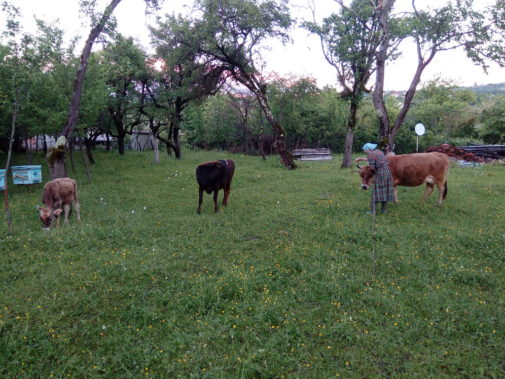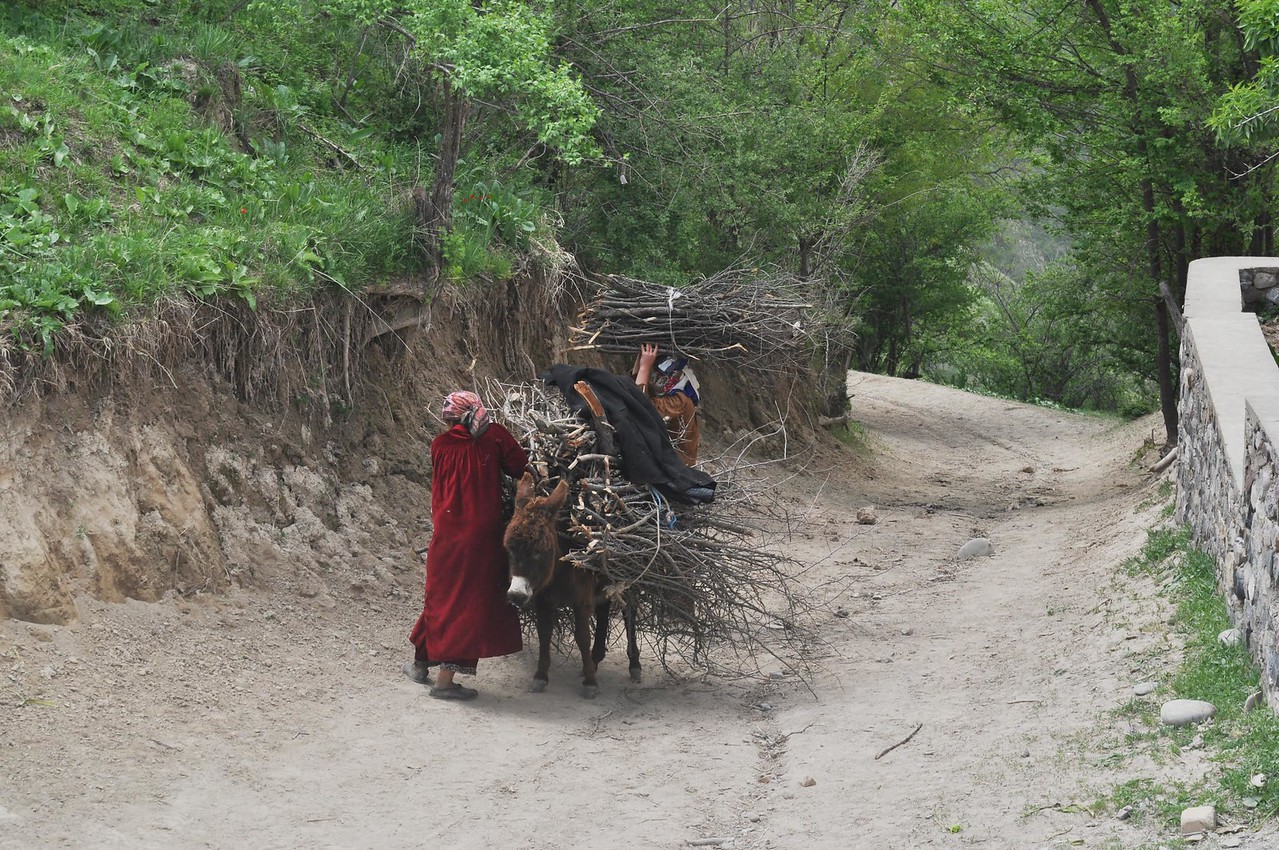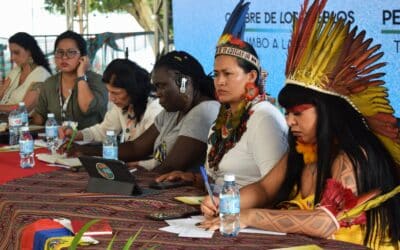by Global Forest Coalition and GRAIN
One important lesson that we can draw from the COVID-19 pandemic that impacted almost every country in the world is that agro-industrial livestock production is causing grave illness for us, forests, and the planet overall. As experts have said, in order to understand why viruses are becoming more dangerous, one must look at the industrial model of agriculture, and more specifically, livestock production.
In doing so, it is equally important to take lessons from local communities’ traditional and agro-ecological practices that are threatened by an imposed food systems model that contradicts the very principles of living in harmony with nature. The implications of COVID-19 for indigenous peoples, pastoralists, women, and peasant farmers come on top of the struggles that they already face. The following stories from communities in Asia[1] build on conversations that have already begun and reflect the stark changes that the world is facing as the COVID-19 pandemic rapidly expands. At the same time, they serve as a basis for alternative models of sustainable livestock farming and generally healthier food systems.
China’s wet markets and animal farms
When the first news reports about COVID-19 outbreaks began appearing, early reports pointed to an outdoor seafood market in the city of Wuhan – which also sells domesticated and wild animals – as the source of the virus. This led local authorities in Wuhan to immediately close down ‘wet’ markets, although since then, there has been a growing body of evidence that points to a different possible origin of COVID-19. However, wet markets remain in the spotlight.
Jian Yi from The Good Food Fund, a China-based NGO that has been in the forefront of promoting sustainable food systems in China, said that he has been overwhelmed with questions related to ‘wet markets’ in China. According to him, in China, no term exists that defines a ‘wet market’ as such, it thus relates to markets selling all sorts of goods. For several years now, concerns over public health have been a focus in China, including the issue of regulating wet markets.

Merjevi, Nargizi Shamanadze hearding her cows. Photo by Ilia Kunchulia
Since COVID-19 hit, more animals have been banned for food consumption, including cats and dogs, in several major cities in China. Concern over public health is also being used by groups such as The Good Food Fund as an opportunity to advocate for healthy and safe food systems, including banning the wildlife trade. However, the challenge is that industry lobbies continue to expand the list of farmed animals in order to allow trading of a wider range of wild animal species.
Meanwhile, over half of China’s population still live in rural areas, and an increasing concentration of animals on industrial farms have meant big losses of livelihoods for small farmers in rural areas; the lockdown is also causing animals to starve to death, some animals even being buried alive by farmers who are thus losing income. At the same time, China’s economic activities continue to expand globally, including by importing both meat and animal feed from forest-rich countries such as Brazil, which currently has of the world’s highest rates of deforestation in order to meet the demand from China and other countries for these products.
Regulating the animal trade is not the same as closing down wet markets; this view has been repeatedly shared by groups like The Good Food Fund. It is important to regulate the trade in wild animals, however, we must also remember that large concentrations of animals, whether wild or farmed, are potentially risky. For instance, findings from a study on the pollution of the Yangtze River by a central government media agency showed that half of pregnant women and children have an over-dose of antibiotics used at animal farms. Groups like the Good Food Fund have been addressing this and other issues and actively collaborating with the China Food Council and several Chinese municipal governments, including that of Wuhan, in order to look into different ways for their food system to achieve balance, examining the multi-faceted impacts of the industrial food system, especially factory farming, and how to make food choices for a better future. These lessons are needed not just for China, but for other countries, too.
Pakistan’s dairy farms
Livestock farming is a very important sector in Pakistan, which is home to around 16 million cows and buffaloes that produce milk and dairy products, considered some of the best in the world. Among farmers, 93% are small and subsistence producers, and of this, 89% are livestock farmers, most of them landless peasants. In Pakistan, farmers refer to livestock as their ‘bank balance’ since many of them lack access to banks and instead sell livestock whenever they need cash. In contrast, 49% of women’s labor is dedicated to tending to livestock. Women farmers consider livestock important to their economy in case of emergencies, as small landless farmers have little to no money to spare.
Given that Pakistan is amongst the five largest dairy producers in the world and given the high rates of malnutrition domestically, it is commendable that the majority of the country’s dairy production and distribution is handled through backyard dairy farms; only 5% of dairy sector sales benefit the corporate sector.
However, at present, there are at least three main multinational dairy corporations in Pakistan, namely Swiss Nestlé and the Dutch Friesland-Campina (which bought 51% of shares in Pakistan’s major dairy company, Engro Corporation, in 2016), and Cargill (which in 2019 invested US$200 million in innovations to support the “flourishing dairy industry” in Pakistan). Despite the fact that these companies control only a very small share of dairy sales in Pakistan to date, they are moving to expand their presence through three main strategies:
- Promoting hybrid maize for animal fodder and maize varieties that will also increase cattle manure and can be used forbiodiesel
- Directly importing fodder to increase dairy production and marketing the fodder aggressively.
- Importing cow semen for breeding in Pakistan as well as live dairy cattle.
The public health debates that have been front and center due to COVID-19 have disproportionally affected small milk sellers (doodhwala), as they are now forbidden from selling their milk on the street or in small shops. Only industrial dairy companies are still allowed to operate, whose milk is obtained from backyard farms and purchased at the very low price of 28 Rupees (US$ 0.17) per liter – less than half of the normal price of 40 to 60 Rupees (US$ 0.25 to 0.37) per liter. Unable to store their milk and persecuted by government authorities, small dairy farmers have no option but to sell to Nestlé and others.
Furthermore, the challenges for small milk sellers have also been intensified by stricter sanitary standards. In January 2020, Punjab Food Authority (PFA) announced that the sale of loose milk would be banned beginning in 2022 on the grounds that it is unhygienic. Dairy farms will henceforth be bound to sell industrial ‘pasteurized’ milk in plastic bags and bottles. The ban could potentially increase consumer prices, as prices in retail shops tend to be 50% higher than those of milk sellers.
Milk is essential to Pakistani food; it is used in many dishes, as are milk products like butter and ghee. At the same time, it is a key source of income for many small rural producers and farmers. The situation is a bit different in the meat sector due to cultural and religious factors; Pakistan has a Muslim majority, and there has been strong resistance to the use of frozen meat as a way to tackle public health concerns because people prefer to access freshly cut meat that they know is halal from local butchers.
If not handled correctly, increasing concerns over public health and hygiene could pave the way for big corporations to destroy people’s livelihoods, leaving behind small producers and sellers who have for centuries relied on traditional methods of obtaining animal protein including milk and dairy and destroying their sources of income.
[1] The sharing is mainly based on the Asia regional webinar “Unsustainable livestock farming and its alternative in a time of COVID-19” organised by the Global Forest Coalition on 27 April 2020, https://globalforestcoalition.org/event/asia-webinar/ – for full webinar, see https://www.youtube.com/watch?v=KTfqv4DHUPY.




